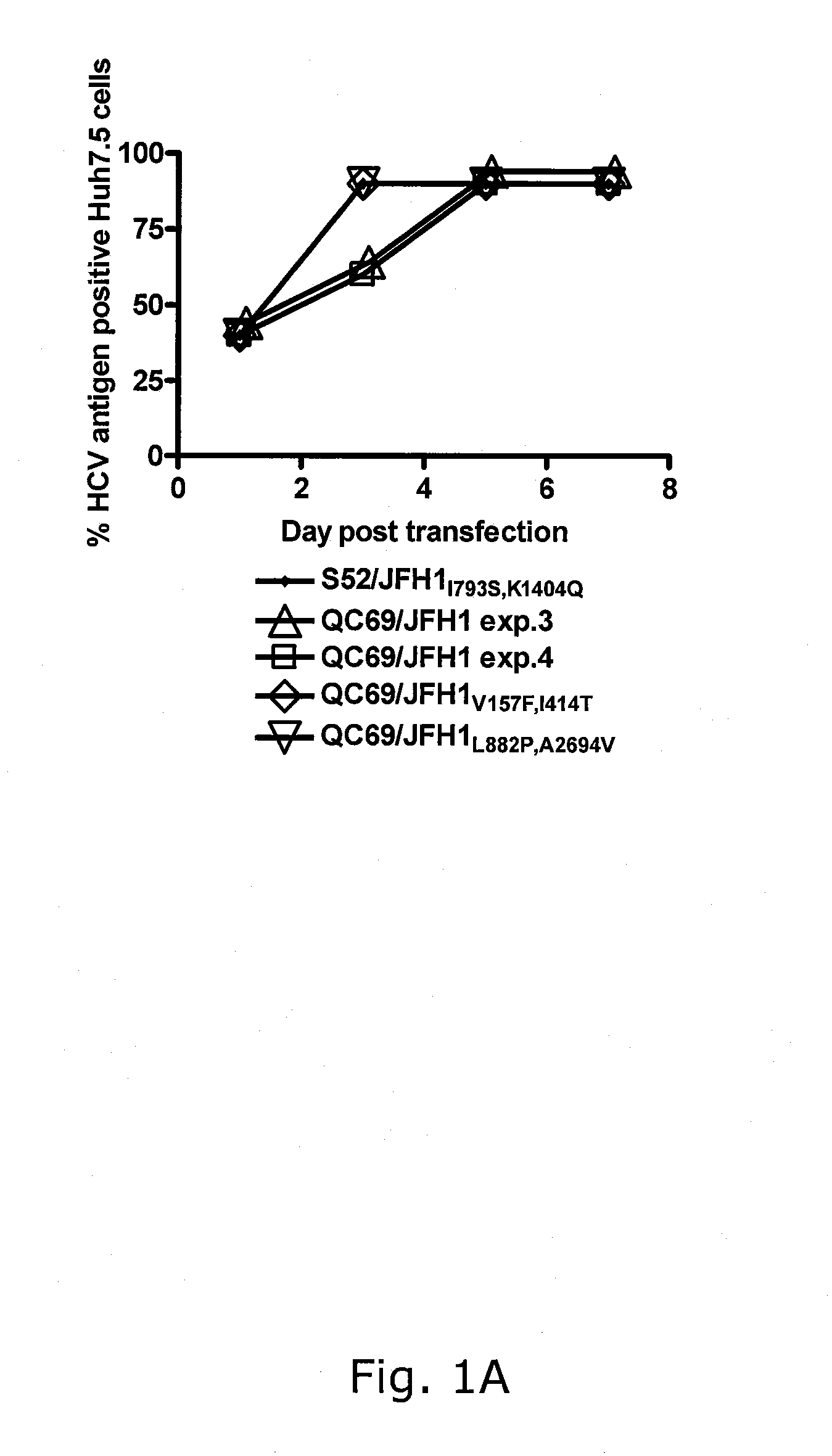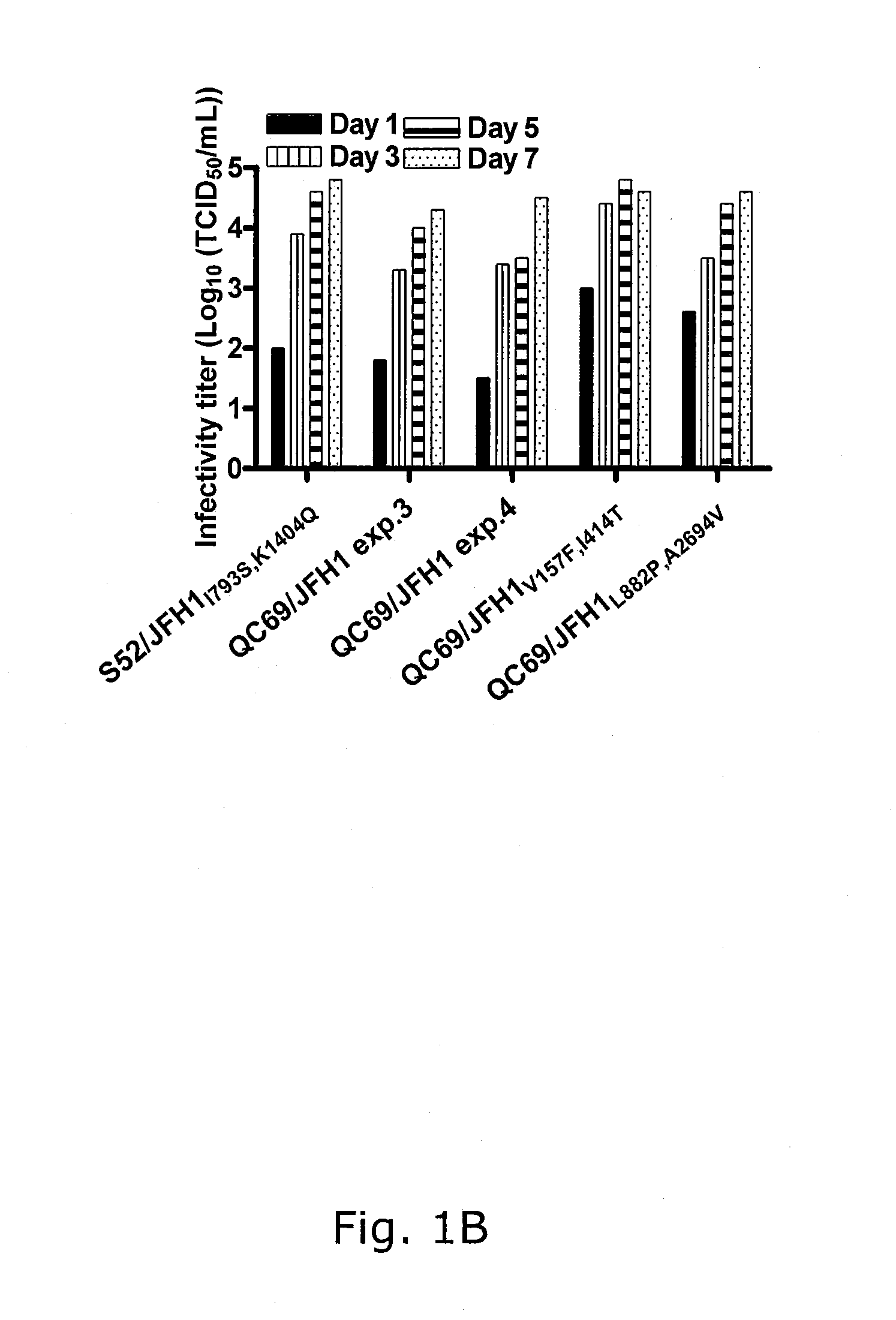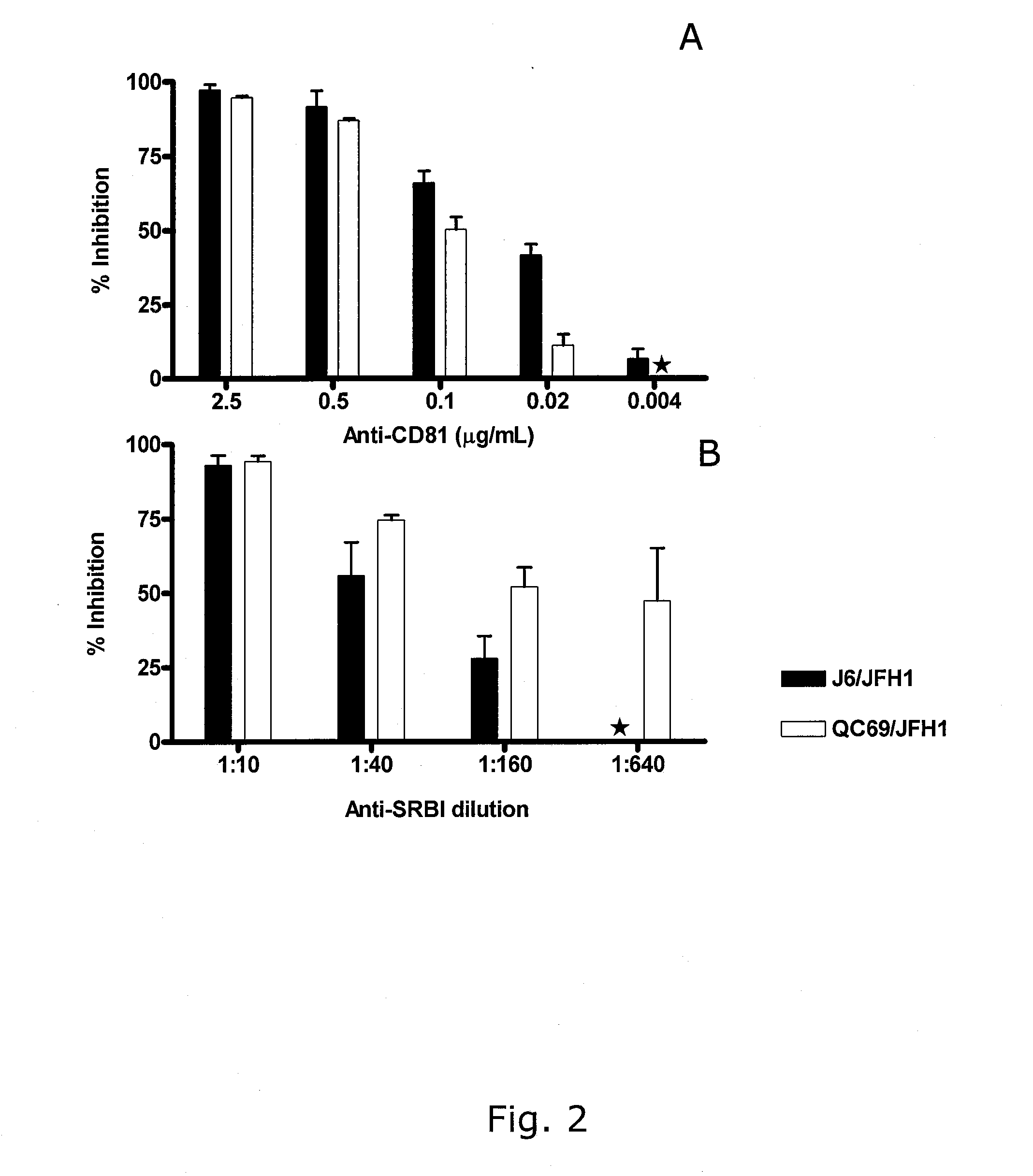EFFICIENT CELL CULTURE SYSTEM FOR HEPATITIS C VIRUS GENOTYPE 7a
a cell culture system and hepatitis c virus technology, applied in the field of infectious recombinant hepatitis c genotype 7 viruses, can solve the problems of increased risk of liver cirrhosis, hepatocellular carcinoma, limited knowledge of natural history, and inability to respond to treatment and neutralizing antibodies, and achieve high hcv rna titers and high infectivity titers
- Summary
- Abstract
- Description
- Claims
- Application Information
AI Technical Summary
Benefits of technology
Problems solved by technology
Method used
Image
Examples
example 1
Cell Culture Adaptation of Intergenotypic 7a / 2a Recombinant (QC69 / JFH1)
[0233]In four independent RNA transfections of Huh7.5 cells, QC69 / JFH1 spread to >50% of the culture on day 3 (data not shown; FIGS. 1A, B). Passage of QC69 / JFH1 yielded HCV RNA titers of ˜108 IU / mL and infectivity titers of ˜104.5 TCID50 / mL. In passaged virus recovered from all 4 transfections, no dominant coding mutations were observed. However, in 2 passages, positions with a 50 / 50 quasispecies of the original and a mutated sequence were observed, G809T (V157F) (Core) and T1581C(I414T) (E2), or T2985C(L882P) (NS2) and C8421T(A2694V) (NS5B), respectively (Table 2). In reverse genetic studies, QC69 / JFH1 viruses containing G809T (V157F), T1581C(I414T), T2985C(L882P) and C8421T(A2694V), singly or in combinations had similar spread kinetics and infectivity titers as S52 / JFH11793S,K1404Q, whereas kinetics of the original QC69 / JFH1 were slightly delayed (data not shown; FIGS. 1A, B). In analysis of passaged viruses, ...
example 2
Titrated Stocks of Genotype 2a and 7a Viruses
[0234]The supernatant virus stocks of genotype 2a and 7a JFH1-based intergenotypic recombinants were characterized (Table 4). Infectivity titers were 105.2 and 104.5 TCID50 / mL and HCV RNA titers were 107.6 to and 107.9 IU / mL, respectively. Specific infectivities, defined as infectious titer relative to the HCV RNA titer were 1 / 251 and 1 / 2518 TCID50 / IU, respectively. There was a good correlation between the infectivity titers determined as TCID50 / mL and FFU / mL, respectively (Table 4).
example 3
Importance of CD81 and SR-B1 for HCV Genotype 7a Infection
[0235]Infection with genotype 2a and 7a recombinants was blocked by anti-CD81 in a dose dependent manner (FIG. 2A); >90% inhibition was observed at 2.5 μg / mL anti-CD81, whereas at 0.02 μg / mL anti-CD81 90% infection inhibition with a 1:10 dilution of polyclonal anti-SR-BI (FIG. 2B). This inhibition was dose dependent, and at 1:160 and 1:640 dilution about 50% inhibition was found for genotype 7a recombinants.
PUM
| Property | Measurement | Unit |
|---|---|---|
| Fraction | aaaaa | aaaaa |
| Fraction | aaaaa | aaaaa |
| Fraction | aaaaa | aaaaa |
Abstract
Description
Claims
Application Information
 Login to View More
Login to View More - R&D
- Intellectual Property
- Life Sciences
- Materials
- Tech Scout
- Unparalleled Data Quality
- Higher Quality Content
- 60% Fewer Hallucinations
Browse by: Latest US Patents, China's latest patents, Technical Efficacy Thesaurus, Application Domain, Technology Topic, Popular Technical Reports.
© 2025 PatSnap. All rights reserved.Legal|Privacy policy|Modern Slavery Act Transparency Statement|Sitemap|About US| Contact US: help@patsnap.com



